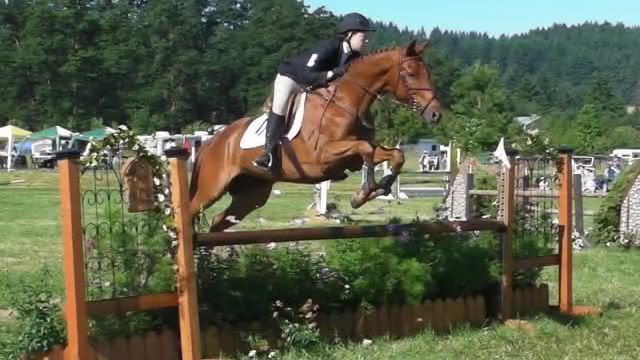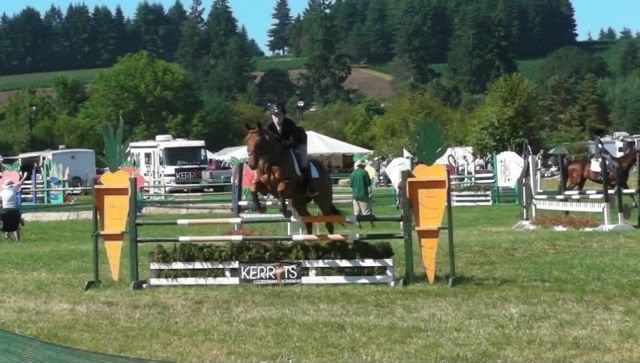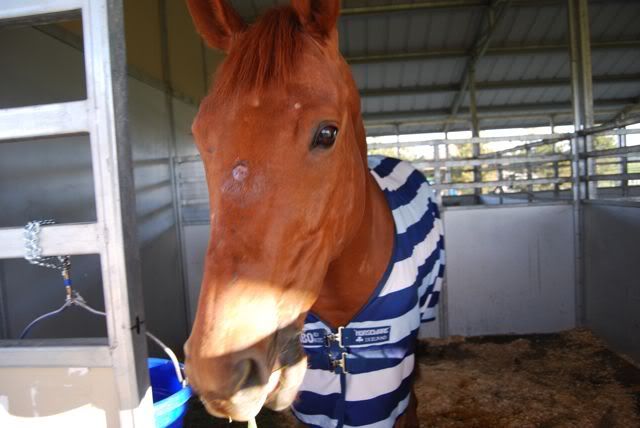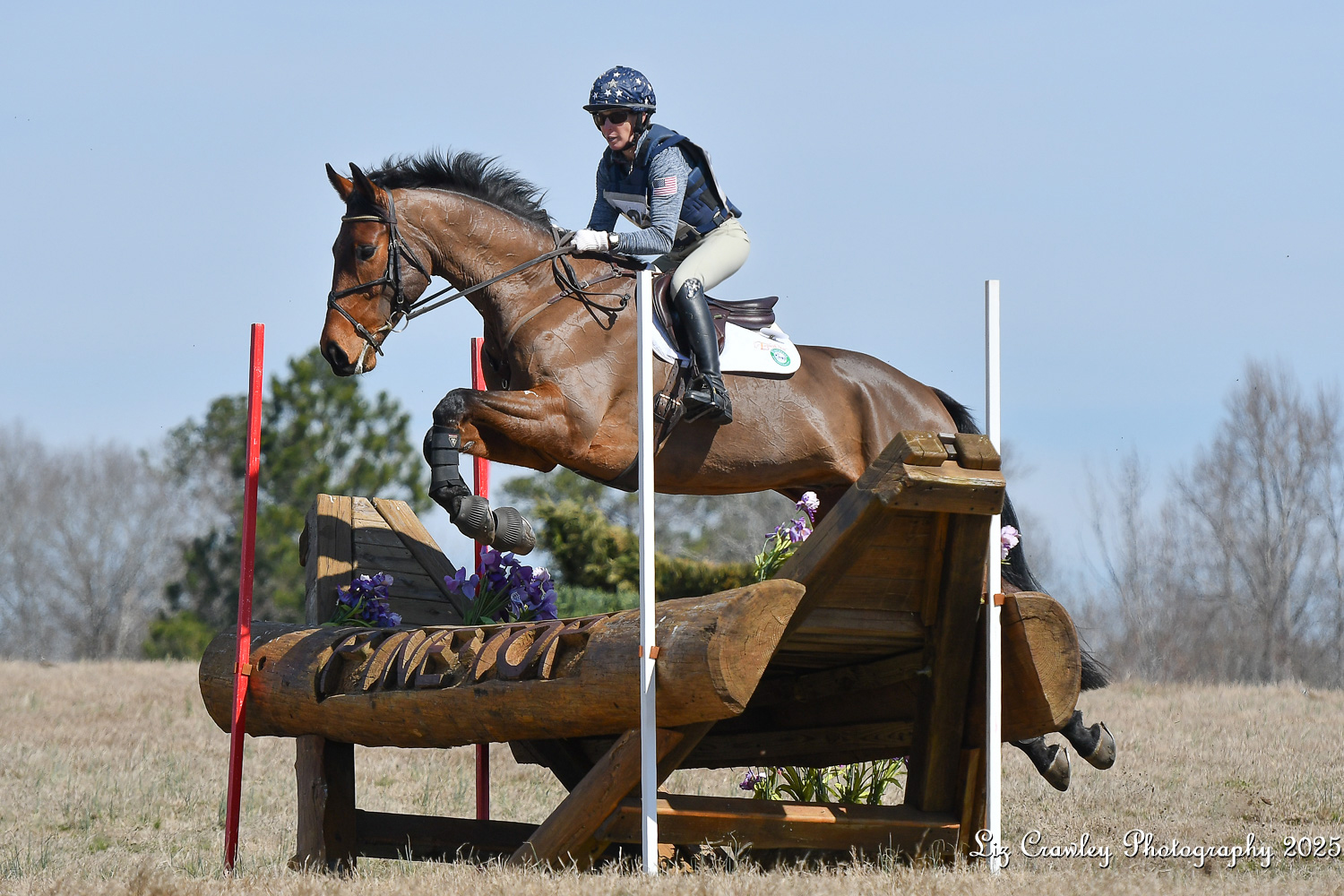
Hello EN fans,
It’s been a very long day for Endurance horses, riders, crew, and volunteers. I spent eleven hours today as part of the veterinary team, serving as horse transport at Loop 3 and 5. I’ve done this for Rolex several years, but I admit I knew very little about Endurance when I began the day.
I learned quite a bit. I was stationed at a check point, where the crew members had opportunity to briefly cool the horses. It was very similar to a C-Halt on a full-format three-day. Riders could spend as much or little time as they wanted. Some just did a quick “splash-n-go” on the move, others dismounted and offered food to their horses.
Here are some other observations…
-There was a mad rush when horses entered the check area. Crew members swarmed the horses, pouring bottles or jugs of water all over them (more on this in a bit). At times, there were four or five horses in at a time, stacked together, and all completely surrounded by people. I was impressed by the horses’ tolerance to the crowds, completely undisturbed and remarkably relaxed.
-Speaking of water: most teams used bottled water to cool out the horses. The US team literally had pickup truck beds FULL of cases of water. While they were setting up, I thought it was for drinking…turns out, it was to pour on the horses! Cases, and cases of bottled water were used. Bottles and caps littered the ground. I think enough fresh water was used to hydrate a small desert nation. And I’m not an extreme recycling fanatic…but the sight of all that empty plastic literally overflowing a large dumpster made me a little sick.
-Not all of it was bottled water, though. Seven water troughs held water, and teams filled buckets, pitchers, and (yes) laundry detergent jugs. After cross-country, I’m used to “sloshing” the horse with water; in endurance, clearly “pouring” is the preferred method. I suppose it helps keep the rider and tack dry! Riders were also handed jugs or bottles, and they dumped it down the horses’ necks as they rode away.
-The US team had a HUGE crew. At least thirty people in USA t-shirts and hot pink hats. I hate to say it, but I was a little bit disappointed by their demeanor. Most countries were relaxed, having a good time, and very courteous. The US crew came off a bit self-important, in a huge rush (for no apparent reason), and pushy. They cleaned up part of their mess, but still left a lot of trash behind (later cleaned up by Canada and Argentina).
-Speaking of other nations… Argentina’s crew was very polite, and seemed to be a big family. They seemed quite prepared, arriving early with their equipment and assured of their roles. Canada had several team members competing; one of theirs was near the last of the pack. The crew members stayed behind and cleaned up much of the leftover trash, including countless bottle caps left all over the ground.
-Costa Rica also was thoroughly enjoying themselves. They posed for photos all over the place, waving their flag proudly. I don’t think they ever stopped smiling.
-A Guatemalan crew member offered their last piece of cheesecake for lunch– GREATLY appreciated, as my station was somehow skipped by the food wagon. It was delicious. Thumbs up for Guatemala!
-I saw more gray Arabians today than I have ever seen in one place. At least three-quarters of the entrants were gray. Also, lots of nylon tack. Neon, bright-colored, nylon tack. It was a little tough for me to observe as a traditionalist groom…but I understand its purpose, and with the amount of water splashed on the reins, bridle, and breastplate, I can appreciate non-leather equipment!
-It was amusing watching teams loading and unloading their water supplies. Most had pickup trucks, some had rental cars. You could tell some nations were not quite comfortable driving on “the wrong side” of the road, as they backed their vehicles up to park. Others seemed to have trouble with their automatic key remotes; several car alarms were accidentally set off, instead of the doors unlocking!
-Endurance horses eat Oreos and CornFlakes. At least, that was a favorite energy snack for some teams. Others offered freshly-picked grass, alfalfa, carrots, and electrolytes. Most of the horses drank very willingly, from buckets shoved in their faces, or from the large troughs. Again, I was struck by the horses’ professionalism about the whole whirlwind of activity around them.
-I have to give another shout-out to Team Canada. Their crew was very enthusiastic, cheering every rider coming and going (all nations, not just theirs), and offering assistance whenever needed. Some of the smaller countries’ individual riders had very little personnel, but the Canadians jumped in with their own water bottles and carrots to help out. The Canadian crew also offered food to us poor starving volunteers who’d had no food all day. We went over to ask for a carrot…they came back bringing us fruit, yogurt, granola bars, rice krispy treats, and chocolate. One of their riders was the last of the day, and the Canadians never lost their great attitude. Count me in as a proud supporter of the Canadian team!
(It’s pretty sad when you’re bumming carrots off foreign nations because your own nation won’t feed its volunteers…but we did get an awesome dinner eventually!)
Most horses looked quite good, though obviously tired near the end of the day. I really enjoyed being part of the WEG today, and learning about the sport of Endurance. I’m not sure it’s something I’d like to try, but it was certainly an interesting day.

Tents in the holding area, between loops. Horses rested between 20-50 minutes, depending on the section of the course.
Team Canada: After Dark

















 Greetings, friends, it’s been far too long since I last blessed this dear blog with my presence. I doubt you’ve missed me though…John has been doing an exceptional job (as always) and the content has continued to improve. Still, I’ve missed my rambling writings, and hope to be back on a more regular basis!
Greetings, friends, it’s been far too long since I last blessed this dear blog with my presence. I doubt you’ve missed me though…John has been doing an exceptional job (as always) and the content has continued to improve. Still, I’ve missed my rambling writings, and hope to be back on a more regular basis! We have had wall to wall eventing coverage for the last five days so John asked me to change things up in this post for variety’s sake. Friday night, I was lucky enough to talk my husband into (another) trip to WEG, in hopes of watching the best dressage horses in the world (for the third time). We were supposed to have free tickets, but that deal fell through. The event was completely sold out, and attempts to find tickets online resulted in prices well beyond our budget. We resigned ourselves to watching it on the big screens outside the arena. Luckily, we happened upon a nice lady outside the arena willing to part with a pair of tickets for $100 total. SCORE! We were in!
We have had wall to wall eventing coverage for the last five days so John asked me to change things up in this post for variety’s sake. Friday night, I was lucky enough to talk my husband into (another) trip to WEG, in hopes of watching the best dressage horses in the world (for the third time). We were supposed to have free tickets, but that deal fell through. The event was completely sold out, and attempts to find tickets online resulted in prices well beyond our budget. We resigned ourselves to watching it on the big screens outside the arena. Luckily, we happened upon a nice lady outside the arena willing to part with a pair of tickets for $100 total. SCORE! We were in!
 Other highlights from the night:
Other highlights from the night:





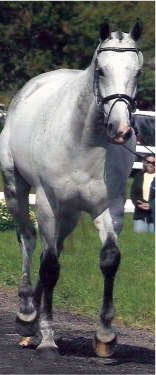 Do you ever stare in awe at the sleek shiny horses, the glistening brass, perfect braids, and dazzling white marks at a CCI trot up? Do you ever wonder how they get that way? (LOTS of hard work is the correct answer!) Each Sunday morning we will bring you a little insider info on how the big-time grooms manage an upper level event horse. Feel free to email or comment with specific grooming questions if you have a topic in mind!
Do you ever stare in awe at the sleek shiny horses, the glistening brass, perfect braids, and dazzling white marks at a CCI trot up? Do you ever wonder how they get that way? (LOTS of hard work is the correct answer!) Each Sunday morning we will bring you a little insider info on how the big-time grooms manage an upper level event horse. Feel free to email or comment with specific grooming questions if you have a topic in mind!



 Name: Erin
Name: Erin




